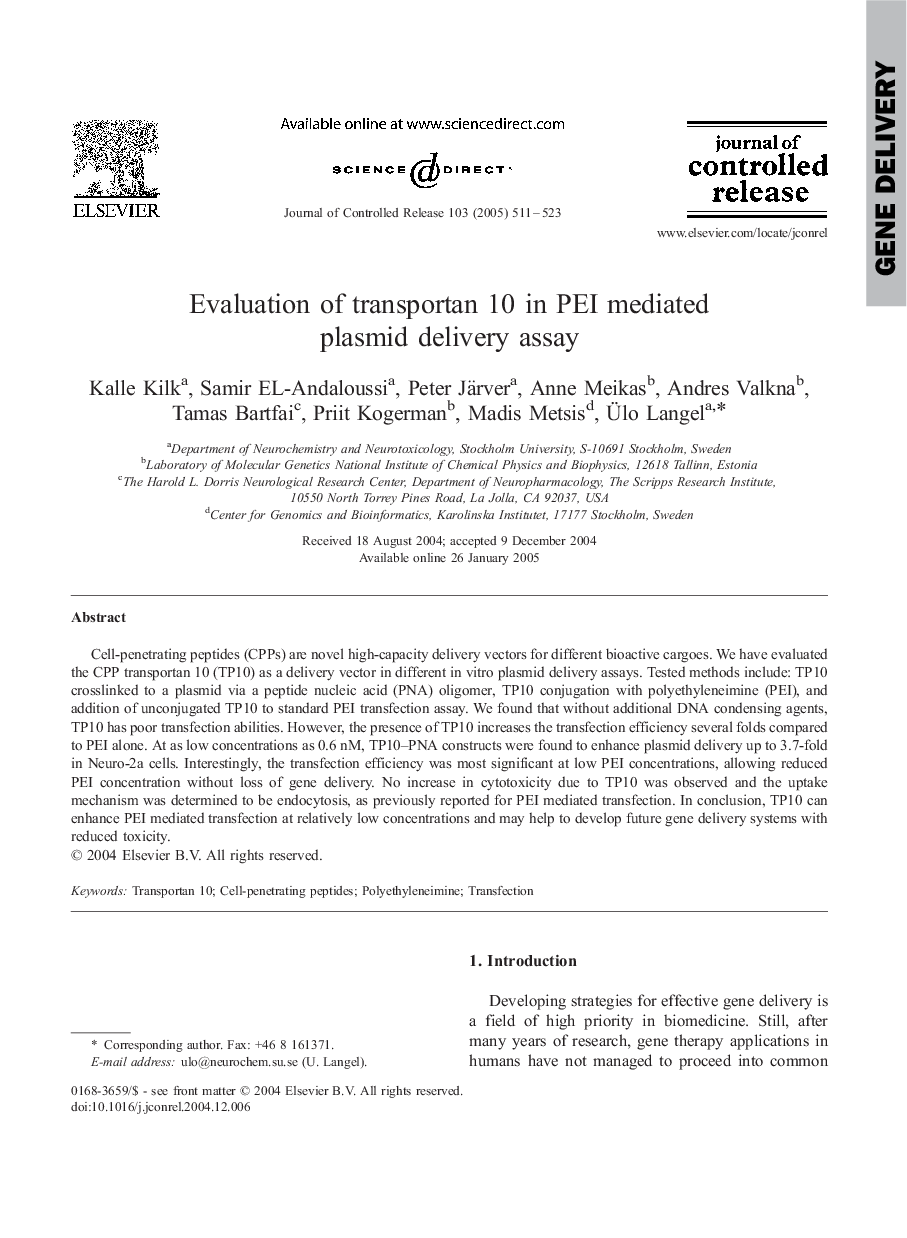| Article ID | Journal | Published Year | Pages | File Type |
|---|---|---|---|---|
| 10613335 | Journal of Controlled Release | 2005 | 13 Pages |
Abstract
Cell-penetrating peptides (CPPs) are novel high-capacity delivery vectors for different bioactive cargoes. We have evaluated the CPP transportan 10 (TP10) as a delivery vector in different in vitro plasmid delivery assays. Tested methods include: TP10 crosslinked to a plasmid via a peptide nucleic acid (PNA) oligomer, TP10 conjugation with polyethyleneimine (PEI), and addition of unconjugated TP10 to standard PEI transfection assay. We found that without additional DNA condensing agents, TP10 has poor transfection abilities. However, the presence of TP10 increases the transfection efficiency several folds compared to PEI alone. At as low concentrations as 0.6 nM, TP10-PNA constructs were found to enhance plasmid delivery up to 3.7-fold in Neuro-2a cells. Interestingly, the transfection efficiency was most significant at low PEI concentrations, allowing reduced PEI concentration without loss of gene delivery. No increase in cytotoxicity due to TP10 was observed and the uptake mechanism was determined to be endocytosis, as previously reported for PEI mediated transfection. In conclusion, TP10 can enhance PEI mediated transfection at relatively low concentrations and may help to develop future gene delivery systems with reduced toxicity.
Related Topics
Physical Sciences and Engineering
Materials Science
Biomaterials
Authors
Kalle Kilk, Samir EL-Andaloussi, Peter Järver, Anne Meikas, Andres Valkna, Tamas Bartfai, Priit Kogerman, Madis Metsis, Ãlo Langel,
